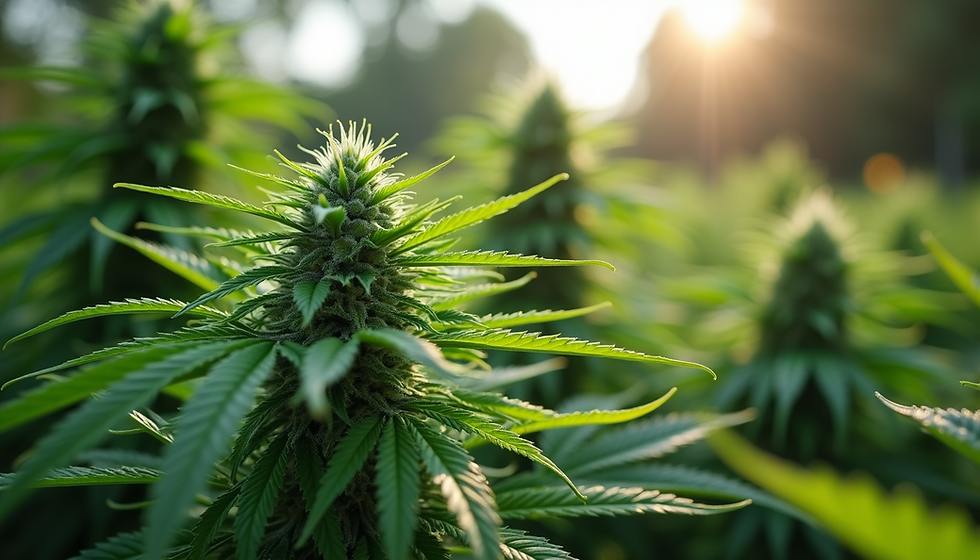Unlock the Secrets: How to Read Cannabis Lab Reports Like a Pro
- cannawannafl
- Jul 29
- 3 min read
Navigating the world of cannabis can feel overwhelming at times, especially with the volume of information available. Understanding lab reports is crucial. These documents act as a guide to help you make safe and informed choices about the products you consume. With this knowledge, you’ll be empowered to choose the right cannabis for your needs!
What are Cannabis Lab Reports?
Cannabis lab reports, also called Certificates of Analysis (COAs), are generated by independent laboratories. They analyze cannabis products to ensure quality, potency, and safety. These reports provide vital information that can prevent you from purchasing subpar products and ensure compliance with state regulations.
For example, a 2021 survey found that 70% of cannabis consumers want to see lab results before making a purchase. Understanding lab reports can help you be part of this informed group of consumers.
Understanding the Basics: What to Look For
Potency Analysis
The potency section of a cannabis lab report reveals the percentage of various cannabinoids in the sample.
Key Cannabinoids:
THC (Tetrahydrocannabinol): This is the main psychoactive compound that creates the "high." A product with 20% THC is likely to produce a stronger effect compared to one with 10%.
CBD (Cannabidiol): Known for its healing properties rather than psychoactivity. For instance, a strain with 15% CBD may provide significant relief from anxiety without delivering a high.
The potency percentages are crucial for informing your experience, especially if you are targeting specific effects or benefits.
Terpene Profile
Terpenes add to the aroma and flavor of cannabis and can influence its effects. Understanding the terpene profile can make a significant difference in your experience.
Notable terpenes include:
Myrcene: Rates high for its relaxing effects and is found in strains like Granddaddy Purple.
Limonene: Commonly found in citrus fruits, it’s known for uplifting moods and is present in strains like Super Lemon Haze.
For example, products with 2% Limonene can elevate your experience, making it lighter and more enjoyable.
Contaminants Testing
Safety always comes first. The contaminants section of the report checks for harmful substances such as:
Pesticides
Heavy Metals
Mold and Bacteria
Most labs will state whether the product has passed these tests. For instance, cannabis that fails pesticide tests can lead to health risks and should be avoided, ensuring that you select products that are safe for consumption.
Moisture Content and Extraction Method
Understanding moisture levels can help prevent spoilage. Ideally, moisture content should be below 12%. This measure helps avoid mold growth and keeps your product fresh.
The method of extraction is also important. Solvent-based extractions might leave behind harmful residues, while CO2 extraction is known to be much safer and cleaner.
Analyzing the Lab Report Layout
Lab reports may vary, but here’s a typical layout that helps you read any report more easily:
Header Information: Displays the lab's name, contact details, and report date.
Sample Information: Contains details like the strain name, batch number, and sample ID.
Test Results: This is where you find cannabinoid levels, terpene profiles, and contaminant analyses.
Notes and Observations: Provides extra information, which can be pertinent for specific consumers.
Familiarizing yourself with this layout can make it simpler to navigate any report you encounter.
Example Lab Report Components

By understanding each component, you'll develop a deeper appreciation for the cannabis products you choose.
Practical Steps to Read a Lab Report
Step 1: Locate the Potency Section
Start by identifying the potency section. This will highlight THC and CBD levels. For example, THC levels around 25% may be ideal for recreational users, while those seeking relaxation might prefer CBD levels over 10%.
Step 2: Check the Terpene Profile
Review the terpene profile to discover potential flavors and aromas. If you enjoy fruity flavors, look for strains high in Limonene. If you prefer earthy notes, consider those high in Myrcene.
Step 3: Evaluate Safety and Compliance
Next, scrutinize the contaminants section. Ensure your chosen product has passed all safety tests. Products labeled "fail" should be avoided to prioritize your health.
Step 4: Understand Moisture Levels
Assess the moisture levels to ensure freshness. If the reading is above safe levels, look elsewhere to ensure a better experience.
Step 5: Familiarize Yourself with the Extraction Process
Learn about the extraction method used. Opt for products that utilize CO2 extraction, as they typically yield a cleaner product with fewer potential contaminants.
Summing It Up
Now that you’ve equipped yourself with the knowledge to read cannabis lab reports effectively, you can make confident choices that meet your preferences and requirements. By breaking down important sections—potency, terpene profiles, and safety—you gain the power to select products with confidence. As the cannabis industry continues to expand, informed consumers like you will enjoy the broad benefits this unique plant has to offer.
Approach your next cannabis purchase with the insights you’ve gained. Happy exploring, and embrace your journey into #HempEducation!



Comments